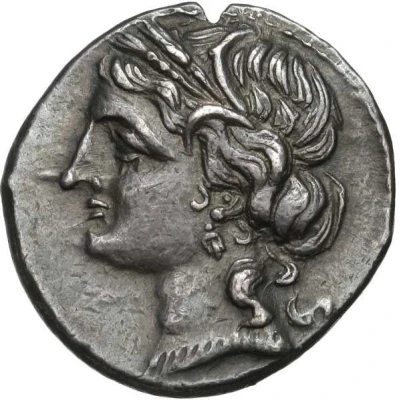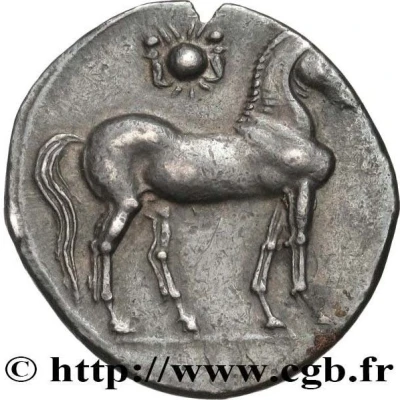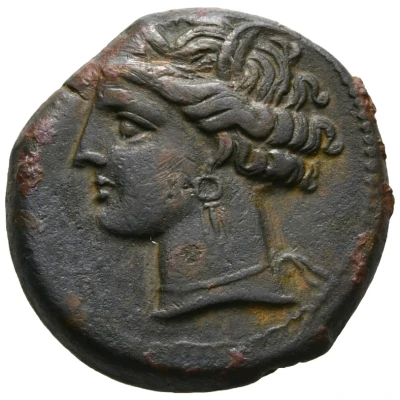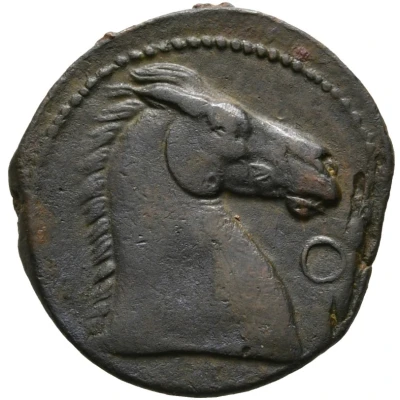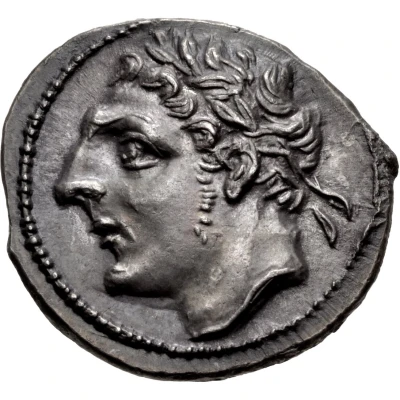
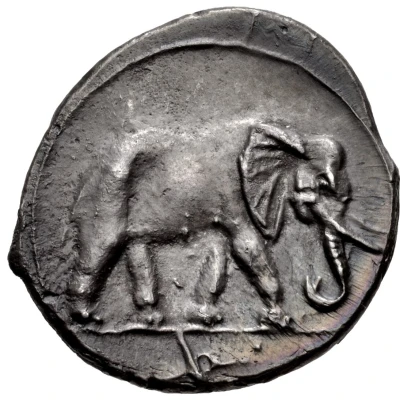

© Classical Numismatic Group, Inc.
½ Shekel 220 BC - 225 BC
| Silver | 3.22 g | 18 mm |
| Issuer | Carthage (Zeugitana) |
|---|---|
| Type | Standard circulation coin |
| Years | 220 BC - 225 BC |
| Value | ½ Shekel |
| Currency | Shekel |
| Composition | Silver |
| Weight | 3.22 g |
| Diameter | 18 mm |
| Shape | Round (irregular) |
| Technique | Hammered |
| Demonetized | Yes |
| Updated | 2024-10-09 |
| Numista | N#192686 |
|---|---|
| Rarity index | 97% |
Reverse
Elephant advancing right; Punic A in exergue.
Lettering: a
Comment
Carthage or Sicilian mint. Struck during the expedition to Sicily,cf. Visonà 55 (shekel); Walker 29; CNP 447; SNG Newham Davis 107; Burnett, Enna 129.
These coins were originally attributed to the Punic mint in Spain, but subsequent hoard evidence has established that they were struck either in Carthage or a Carthaginian mint in Sicily during the Second Punic War (see A. Walker, "Some Hoards from Sicily and a Carthaginian Issue of the Second Punic War" in Studies Mildenberg, p. 275, and note 6). Burnett (Enna) argued, based on the fixed die axes of the coins, that this issue was struck in Carthage, but for circulation in Sicily. (source: CNG Triton XXIII auction catalog)
Interesting fact
The ½ Shekel coin from Carthage (Zeugitana) was used as a form of currency during the period of Carthaginian rule in North Africa, specifically in what is now modern-day Tunisia. The coin features an image of a horse on one side and a palm tree on the other, which symbolized the city's wealth and prosperity. The use of silver in the coin's production also signified the value and importance of the currency in the region. Despite being over 2,000 years old, some of these coins have been well-preserved and can still be found in collections and museums today, offering a glimpse into the rich history and culture of ancient Carthage.
